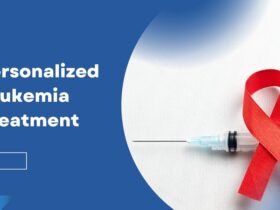Often dismissed as inconsequential, rear-end collisions harbor the potential for significant, latent health complications. More often than not, these incidents result in injuries that elude immediate detection. They manifest in days, weeks, or even months post-accident.
Such delayed onset presents a formidable challenge for medical professionals and victims alike, leading to chronic conditions if left unaddressed. This article aims to elucidate the most commonly overlooked injuries resulting from posterior vehicle impacts.
We will try to foster a more comprehensive understanding of these deceptively complex events.
The Physics of Posterior Impact
Posterior vehicular collisions involve sophisticated physical forces that belie their apparent simplicity. When a trailing vehicle strikes a stationary or slower-moving vehicle ahead, it initiates a rapid kinetic energy transfer. This transfer manifests as an abrupt forward acceleration of the impacted vehicle, subjecting its occupants to a swift, unanticipated motion.
Mayo Clinic states that the human body, particularly the cervical spine, experiences a whiplash-like effect characterized by a rapid extension followed by flexion. This movement sequence can compromise the integrity of various anatomical structures, including intervertebral discs, ligaments, and musculature.
Notably, the severity of physiological impact does not always correlate with collision speed or visible vehicle damage. Accidents at even 7mph can cause soft injuries.
Modern automotive design, while enhancing overall safety, may inadvertently mask the true extent of structural deformation. On many occasions, this can lead to an underestimation of occupant risk. Consequently, a comprehensive biomechanical analysis is crucial for accurately assessing the potential for injury in these scenarios.
The Prevalence and Impact of Rear-End Collisions
Posterior vehicle impacts constitute a significant proportion of road traffic incidents, with far-reaching consequences. Recent statistical analyses reflect the grim truth. These collisions accounted for approximately one-sixth of all motor vehicle accidents in the United States in 2022. This substantial percentage translated to over 3,000 fatalities, underscoring the potential severity of such incidents.
Urban environments characterized by frequent stop-and-go traffic patterns exhibit a higher incidence of these collisions.
The ramifications of rear-end impacts extend beyond mere statistics, occasionally capturing public attention through high-profile cases. A recent incident in Atlanta involving a renowned musical artist, T-Paine, highlights the pervasive nature and gravity of these collisions. This particular case was complicated by allegations of substance impairment. This emphasizes the critical importance of comprehensive post-incident evaluation.
However, such publicized events represent only a fraction of the total occurrences. In Georgia alone, vehicular fatalities exceeded 1,700 in 2022, with rear-end collisions contributing significantly to this figure. These facts and figures underscore the need for proactive measures after posterior vehicle impacts.
In these situations, you should consult an experienced attorney to file claims and get justice. Expert Atlanta personal injury attorneys can take charge of your legal journey while you recuperate from your injuries.
According to Atlanta Personal Injury Law Firm, these professionals will help you gather crucial evidence and negotiate with insurers. Moreover, many firms work on a contingency basis and will charge you only after helping you get the compensation promised.
Understanding Hidden Injuries
The delayed onset of symptoms can lead to these injuries being overlooked or misdiagnosed in initial assessments.
Whiplash
One of the most common yet frequently undetected injuries is whiplash-associated disorder (WAD). This condition involves damage to the soft tissues of the neck and upper back. This occurs as a result of the rapid back-and-forth movement of the head during impact.
Symptoms of WAD may not manifest for hours or even days after the accident, often leading to underestimation of its severity.
Cerebral Impact in Posterior Collisions
Rear-end impacts can induce intracranial trauma through rapid acceleration-deceleration forces. This may result in microscopic neural damage, even without direct cranial contact. Symptoms include subtle cognitive alterations, often mistaken for temporary stress reactions.
Timely identification through comprehensive neurological assessment is vital. Early intervention strategies, including cognitive rehabilitation, can enhance recovery trajectories and mitigate long-term neurological sequelae.
Neurovascular Compression Syndrome
Abrupt cervical movements in rear-end collisions may precipitate a complex condition involving compression of neurovascular structures at the thoracic aperture. Symptoms span sensory disturbances, motor deficits, and circulatory anomalies. Management approaches range from conservative physical modalities to surgical interventions in refractory cases.
Prompt diagnosis is crucial to prevent irreversible neural compromise or vascular complications. This necessitates a multidisciplinary clinical approach for optimal patient outcomes.
Psychological Impact of Rear-End Collisions
The ramifications of rear-end collisions extend beyond physical injuries, often encompassing significant psychological effects. These mental health impacts, while less visible, can profoundly affect a victim’s quality of life and overall well-being.
Post-Traumatic Stress Disorder (PTSD) is a notable concern following such accidents. Forbes states that victims may experience flashbacks, anxiety, or heightened stress responses when faced with situations reminiscent of the collision. This condition can impair daily functioning and require specialized therapeutic intervention.
Additionally, many individuals develop a persistent fear of driving or riding in vehicles post-accident. This phobia, known as vehophobia, can severely limit one’s mobility and independence. It may necessitate cognitive-behavioral therapy or other psychological treatments to overcome.
Depression and anxiety disorders are also common sequelae of rear-end collisions. The physical pain, lifestyle disruptions, and financial stress associated with the accident can contribute to the onset or exacerbation of these mental health conditions.
Healthcare providers and support systems must recognize and address these psychological impacts alongside physical injuries. Holistic treatment approaches that encompass both mental and physical health can improve recovery outcomes for rear-end collision victims.
FAQs
Q1: How long after a rear-end collision can symptoms of hidden injuries appear?
A: Symptoms of concealed injuries may manifest weeks or even months post-collision. This delayed onset underscores the importance of ongoing medical monitoring. Vigilance in observing and reporting new physical or cognitive changes is crucial for the timely diagnosis and treatment of latent injuries.
Q2: Can rear-end collisions exacerbate pre-existing medical conditions?
A: Rear-end impacts can indeed aggravate pre-existing conditions, particularly those involving the spine or neurological system. The sudden forces experienced during the collision may accelerate degenerative processes or reactivate dormant symptoms. This necessitates a comprehensive medical evaluation to differentiate new injuries from exacerbated conditions.
Q3: What role does vehicle safety technology play in mitigating rear-end collision injuries?
A: Advanced safety technologies, such as automatic emergency braking and forward collision warning systems, reduce the incidence and severity of rear-end collisions. These innovations can decrease impact forces, potentially minimizing the risk of both immediate and latent injuries in occupants.
The concealed dangers of minor car crashes extend far beyond immediate physical trauma. They encompass a complex interplay of physiological, psychological, and societal impacts. This multifaceted nature demands a paradigm shift in post-collision care, emphasizing long-term monitoring and holistic treatment approaches.
The potential for latent injuries and their far-reaching consequences can foster a more comprehensive and empathetic response to these all-too-common incidents.










Got a Questions?
Find us on Socials or Contact us and we’ll get back to you as soon as possible.